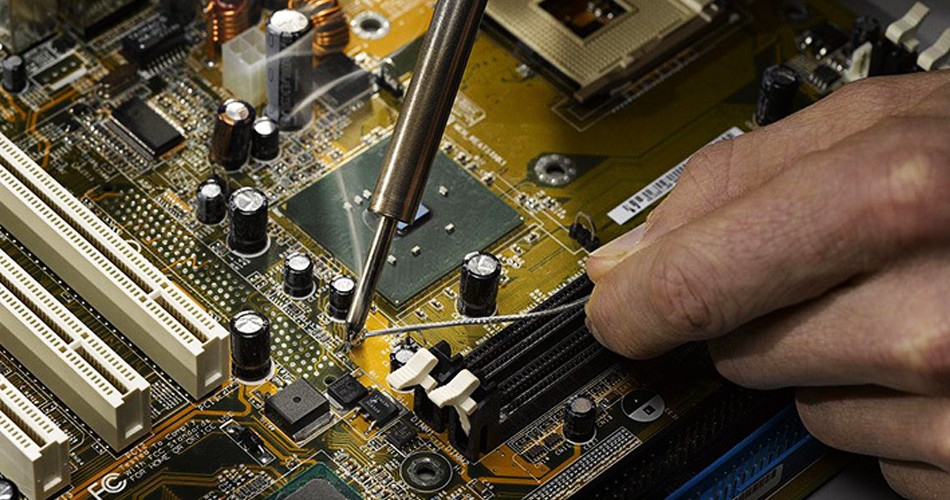- English
- Español
- Português
- русский
- Français
- 日本語
- Deutsch
- tiếng Việt
- Italiano
- Nederlands
- ภาษาไทย
- Polski
- 한국어
- Svenska
- magyar
- Malay
- বাংলা ভাষার
- Dansk
- Suomi
- हिन्दी
- Pilipino
- Türkçe
- Gaeilge
- العربية
- Indonesia
- Norsk
- تمل
- český
- ελληνικά
- український
- Javanese
- فارسی
- தமிழ்
- తెలుగు
- नेपाली
- Burmese
- български
- ລາວ
- Latine
- Қазақша
- Euskal
- Azərbaycan
- Slovenský jazyk
- Македонски
- Lietuvos
- Eesti Keel
- Română
- Slovenski
- मराठी
- Srpski језик
Troubleshooting Techniques in PCBA Manufacturing: Quickly Identify and Resolve Problems
2024-06-01
In the manufacturing process of PCBA (Printed Circuit Board Assembly), troubleshooting skills are one of the key factors in ensuring product quality and production efficiency. Quickly locating problems and solving faults can reduce production interruptions, improve product quality, reduce maintenance costs, and enhance enterprise competitiveness. This article will explore troubleshooting techniques in PCBA manufacturing, as well as how to quickly locate problems and solve them.

1. Equipment and tool inspection
The first step in troubleshooting is to check whether the equipment and tools are working properly. Ensure the normal operation of production equipment and tools, including welding robots, SMT machines, testing equipment, etc. Check whether the equipment is powered on, supplied with sufficient air or hydraulic pressure, and maintained in a timely manner to ensure its normal operation.
2. Check components and connections
The fault can originate from the component itself or connection issues between components. Check whether the components on the PCBA are installed correctly, whether the welding is good, and whether the connections are firm. Pay special attention to the installation and connection of key components and high-frequency components to ensure they meet specifications and requirements.
3. Check the circuit board
PCBA itself may have design or manufacturing defects, leading to malfunctions. Check the design documents and manufacturing process of the circuit board to confirm compliance with specifications and standards. Use testing equipment to conduct a comprehensive inspection of the circuit board, including conductivity testing, short circuit testing, capacitance testing, etc., to quickly identify potential issues.
4. Using troubleshooting tools
The commonly used troubleshooting tools in modern PCBA manufacturing include fault diagnosis instruments, thermal imagers, X-ray detection equipment, etc. These tools can help quickly locate fault points and problem areas, improving troubleshooting efficiency. For example, a thermal imager can detect hotspots and abnormal temperatures on PCBA, identifying potential fault points.
5. Data analysis and fault recording
During the troubleshooting process, promptly record the fault symptoms, troubleshooting steps, and solutions. Establish a fault record database, analyze the frequency and mode of faults, identify common causes of faults, and develop preventive measures and improvement plans. Utilize data analysis tools to statistically analyze fault data, helping to improve troubleshooting efficiency and quality.
6. Training and skill enhancement
The troubleshooting skills in PCBA manufacturing require experienced technicians to operate and execute them. Regularly conduct troubleshooting training and skill enhancement to improve the technical level and operational proficiency of employees. Establish a mechanism for knowledge sharing and experience inheritance, share successful troubleshooting cases and best practices, promote team collaboration and experience accumulation.
7. Continuous improvement and optimization
Troubleshooting is not only an emergency measure, but also a process of continuous improvement and optimization. Utilize feedback and lessons learned during troubleshooting to optimize manufacturing processes, enhance equipment performance, and improve product design, continuously improving the quality and efficiency of PCBA manufacturing.
Epilogue
The troubleshooting techniques in PCBA manufacturing are an important guarantee for ensuring product quality and production efficiency. Through measures such as equipment and tool inspection, component and connection inspection, circuit board inspection, use of troubleshooting tools, data analysis and fault recording, training and skill enhancement, continuous improvement and optimization, problems can be quickly identified and resolved, improving the stability and reliability of PCBA manufacturing, meeting customer needs, and enhancing enterprise competitiveness. With the continuous progress and innovation of technology, troubleshooting skills will also evolve and improve, driving the entire electronic manufacturing industry to a higher level.
-
Delivery Service






-
Payment Options









